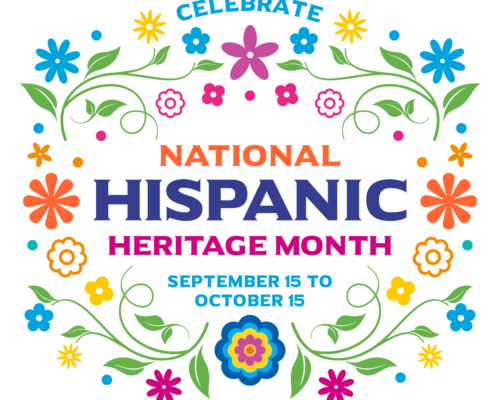Do you want to gain more attention for your nonprofit’s work?
Get the word out with a press release
Writing a press release is one of the best ways to share your nonprofit’s newsworthy story with local media. A press release is also a great tool for sharing your accomplishments with your supporters. But if you don’t have a background in public relations—or the budget to hire a PR professional—it can be hard to know where to start.
To help you do more with limited resources, we’re going to define what a press release is and share when and how to write and format a press release for your nonprofit. With an understanding of how to create a press release, you’ll be ready to get the word out about all the good that your nonprofit is doing in the world.
What’s a press release?
A press release is a brief and timely write-up of a compelling news story that is sent to targeted media outlets. The purpose of a press release is to build interest among journalists and publications so that they write about your story. A press release contains all the information a journalist would need to easily write their own news piece.
When should you write a press release?
Getting the timing of your press release right is a big deal. Since reporters and journalists are looking to share stories that are immediately relevant, you should always announce new developments as they happen. That means writing a press release when newsworthy stories take place, such as:
- The launch of a new program
- An upcoming fundraiser or event
- The award of a new grant
- The formation of a new partnership
- A recent milestone or major accomplishment
- The hiring of new leadership/board members
- The publication of a new study
- A response to a crisis, such as sending volunteers or resources
writing and formatting your press release
The format of a press release reads like a news story. Since journalists have to read so many press releases, the industry has a standard format that everyone follows. This helps journalists quickly learn what they need to know. And the easier you make it for them to understand your story, the more likely it is that they will write about it.
Take a little time to learn about the AP Stylebook rules. The Associated Press sets the standards for journalists and public relations professionals alike. While many how-to articles skip this detail, we think it’s important to at least know it exists and to try your best to follow their rules when you write your press release. It allows you to speak in the language of the press and be perceived as a professional in the industry.
Did you know? In AP style, there are rules like when to spell out numbers (spell out one through nine and use figures for bigger numbers, like 101) and how state names are abbreviated in your dateline (if SAN FRANCISCO is your city, you don’t include the state, but when you do it’s abbreviated Calif.).
Keep these rules in mind while you write your press release. Here’s how to do it in 8 steps:
1. Begin your press release with your contact information: media contact name, phone number, and email. Generally, this will be the person who wrote the press release or whoever plans to field media inquiries.
2. Immediately after your contact information, add a left-aligned distribution date. You can either write “FOR IMMEDIATE RELEASE” or “FOR RELEASE ON [date] AT [time],” depending on when you want the release to be distributed.
3. Hook your reader with your headline and include an optional tagline. This is arguably the most important part of your press release! It’s what journalists read first. Since they see tons of press releases, you’ll want yours to be intriguing enough to make them read more.
4. Start the first paragraph with a dateline in AP format: “Oakland, Calif., Sept. 11, 2018” and use the opening paragraph to briefly summarize the most important points of your story. Put your most critical and compelling information in that first sentence, or lede. The phrase burying the lede refers to this first sentence: don’t make your reader search for the lede (because they won’t).
Make sure you cover the 5 Ws and the H, which are six questions you want to answer for the journalist in your press release: Who, What, Where, When, Why, and How. Always write with an objective and balanced tone; journalists will be wary of a press release that sounds too promotional.
5. Use the following paragraphs to provide the most relevant details and at least one quote from a reputable source, like your nonprofit’s Executive Director or other community partners.
6. Unlike fundraising appeals, your call to action (CTA) goes in the final paragraph of your press release. Explain what actions readers can take and what to expect next.
7. Add an About [Organization] section after the final paragraph and include your nonprofit’s boilerplate About Us.
8. End with ###. These hashtags signal the end of the press release.
Depending on how you will distribute the press release, you can either write it on your organization’s letterhead or as a Word document without any special formatting. If you’re using a company to distribute your press release online, any formatting or design is often stripped away before they send the release out over the wire. In this case, plain text will work just fine. However, if you plan to post the release on your website, you’ll want to take the time to make it look good.





Meshelle
October 17, 2018Thanks! Good information except, who do you release to? where do you find contact information for those who want to see your press release?
Ali Oligny
October 18, 2018Hi Meshelle! Thanks for asking – that’s a great question. Unless you already have a personal connection to a journalist at a larger publication, I would start with your local paper. Find their website and look for the “Contact Us” section – it might be tucked away at the bottom! There, you should be able to find the names of journalists and the topics they cover, along with their email addresses. You can also send your press release directly to the Editor of the paper.
You might also find this follow-up post helpful on How to Get Media Coverage with a Press Release. Let me know how it goes!